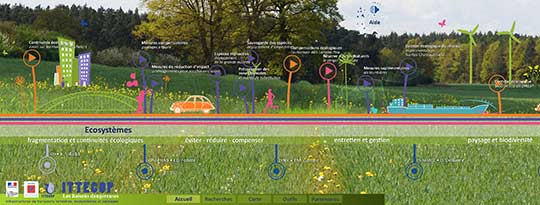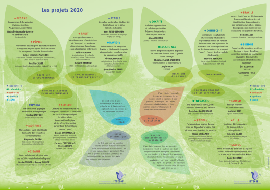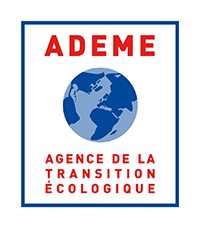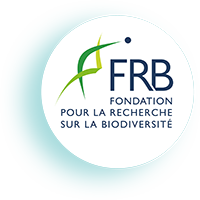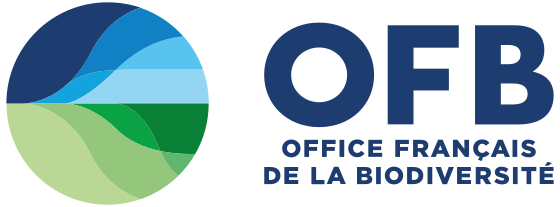GRAPHAB
- Using landscape graphs to evaluate and mitigate the impacts of major transport infrastructure on species
Using landscape graphs to evaluate and mitigate the impacts of major transport infrastructure on species
The objective of the Graphab project is to propose and test a set of methods to estimate the impact of major transport infrastructures on the distribution of species. This approach is based on the observation that classical impact studies are limited to an area close to the infrastructure route, whereas a barrier effect can occur over a longer period if the species are highly dependent on their ecological network. The approach chosen to model ecological networks is that of landscape graphs, which have been coupled with species distribution models. By comparing the results of distribution models diachronically, before and after the establishment of an infrastructure, it is possible to map its impact and estimate its disturbance distance.
This research has been applied to several species in a vast study area surrounding the eastern branch of the Rhine-Rhone high-speed line. Tests of the methodological protocol first focused on a virtual species, whose population was simulated so as to depend on a strong connectivity. Two real species were then analyzed. For the tree frog, a frog species whose presence has been dependent on connectivity at a local scale, the estimated impact of the Rhine-Rhone high-speed line is small (about 1 km). For the little rhinolophe, a bat species whose location of deposits has been sensitive to long-distance connectivity, LGV should have a longer-term impact.
The set of methods put in place gave rise to the creation of a software tool, Graphab 1.0. This tool facilitates the exploration of landscape graphs and proposes an original gateway with distribution models. All the results obtained invite further tests, particularly to use the models in an operational framework for the development of transport infrastructure. In the long term, new field campaigns would be useful to validate the impact estimates resulting from the modelizations.
Valorisation
| Articles scientifiques | Foltête JC, Clauzel C, Vuidel G, Tournant P, 2012. Integrating graph-based connectivity metrics into species distribution models. Landscape Ecology, 27:1-13. |
| Articles scientifiques | Foltête JC, Vuidel G, Clauzel C, 2012. Graphab 1.0: A software tool dedicated to the modelling of landscape networks. Environmental Modeling and Software, 38:316-327. |
| Articles scientifiques | Tannier C, Foltête JC, Girardet X, 2012. Assessing the capacity of different urban forms to preserve the connectivity of ecological habitats, Landscape and Urban Planning, 105: 128-139. |
| Articles scientifiques | Girardet X, Foltête JC. Designing a graph-based approach in the landscape ecological assessment of linear infrastructures. Environmental Impact Assessment Review, 42:10-17. |
| Articles scientifiques | Clauzel C, Foltête JC. Impact assessment of a high-speed railway on species distribution: Application to the European tree frog (hyla arborea) in Franche-Comté. Journal of Environmental Management, 127:125-134. |
| Articles scientifiques | Tournant C, Afonso E, Giraudoux P, Foltête JC. Evaluating the role of habitat connectivity in the distribution of the lesser horseshoe bat using landscape graphs. Biological Conservation, 164:39-49. |
| Articles scientifiques | Foltête J.C., Clauzel C., Girardet X., Tournant P., Vuidel G., 2012. La modélisation des réseaux écologiques par les graphes paysagers. Revue Internationale de Géomatique, 22(4), 641-658. |
| Articles scientifiques | Foltête JC, Giraudoux P, 2012. A graph-based approach to investigating the influence of the landscape on population spread processes. Ecological Indicators, 18:684-692. |
| Articles de vulgarisation | Tournant P, 2010. Connectivité des habitats et distribution du petit et du grand rhinolophe : données, modèles et prédictions. Prix A’doc 2010 de la jeune recherche en Franche-Comté. Presses universitaires de Franche-Comté, 6. |
| Articles de vulgarisation | Tournant P, 2011. La génétique au service de l’étude des espèces : y a-t-il des échanges entre les colonies de petits rhinolophes en Franche-Comté ?L’Azuré 12 : 6. |
| Communication | Foltête JC, Clauzel C, Girardet X, Tournant P, Vuidel G, 2012, Modélisation des réseaux écologiques par les graphes paysagers, Séminaire « Approches méthodologiques en géomatique pour la cartographie de la Trame Verte et Bleue », GDR Magis, Paris, janvier 2012. |
| Communication | Girardet X, 2012, Protocole d'évaluation de l'impact d'une infrastructure de transport sur les réseaux écologiques, poster, Séminaire « Approches méthodologiques en géomatique pour la cartographie de la Trame Verte et Bleue », GDR Magis, Paris, janvier 2012. |
| Communication | Tournant P, 2011, Assessing habitat connectivity of the lesser horseshoe bat using graph theory to explain its distribution, 6 ème Congrès Européen de Mammalogie, Paris, juillet 2011. |
| Communication | Tournant P, 2011, La fragmentation du paysage peut elle expliquer le déclin du petit rhinolophe ? Utilisation de la théorie des graphes pour caractériser la connectivité de ses habitats, 17 ème Forum des Jeunes chercheurs, Dijon, juin 2011. |
| Communication | Girardet X, 2011, Sensibilisation à la géographie et au paysage : impacts des infrastructures de transport sur les déplacements de la faune, Fête de la science, Besançon, octobre 2011. |
| Communication | Girardet X, Foltête JC, 2011, Quantification de la fragmentation du paysage par le réseau routier, 10 e Rencontres de Théo Quant, Besançon, février 2011. |
| Communication | Tournant P, Afonso E, Giraudoux P, Foltête JC, 2011, Caractérisation de la connectivité des habitats du petit rhinolophe en Franche-Comté, 10 e Rencontres de Théo Quant, Besançon, février 2011. |
| Communication | Tournant P, 2011, Caractérisation de la connectivité des habitats et distribution du petit rhinolophe en Franche-Comté, poster, Congrès Ecologie 2010, Montpellier, septembre 2010. |
| Communication | Girardet X, Tournant P, 2010. La connectivité du paysage, 84 ème Foire Comtoise, thématique : la recherche en Franche-Comté, Besançon, mai 2010. |
| Communication | Foltête JC, 2009, Land planning and consequences for the environment, Potential application of a graphic representation of the landscape, Workshop ANR-NSF, Reims, april 2009. |
| Valorisation électronique | Mise en ligne du logiciel : http://thema.univ-fcomte.fr/productions/graphab/ |

